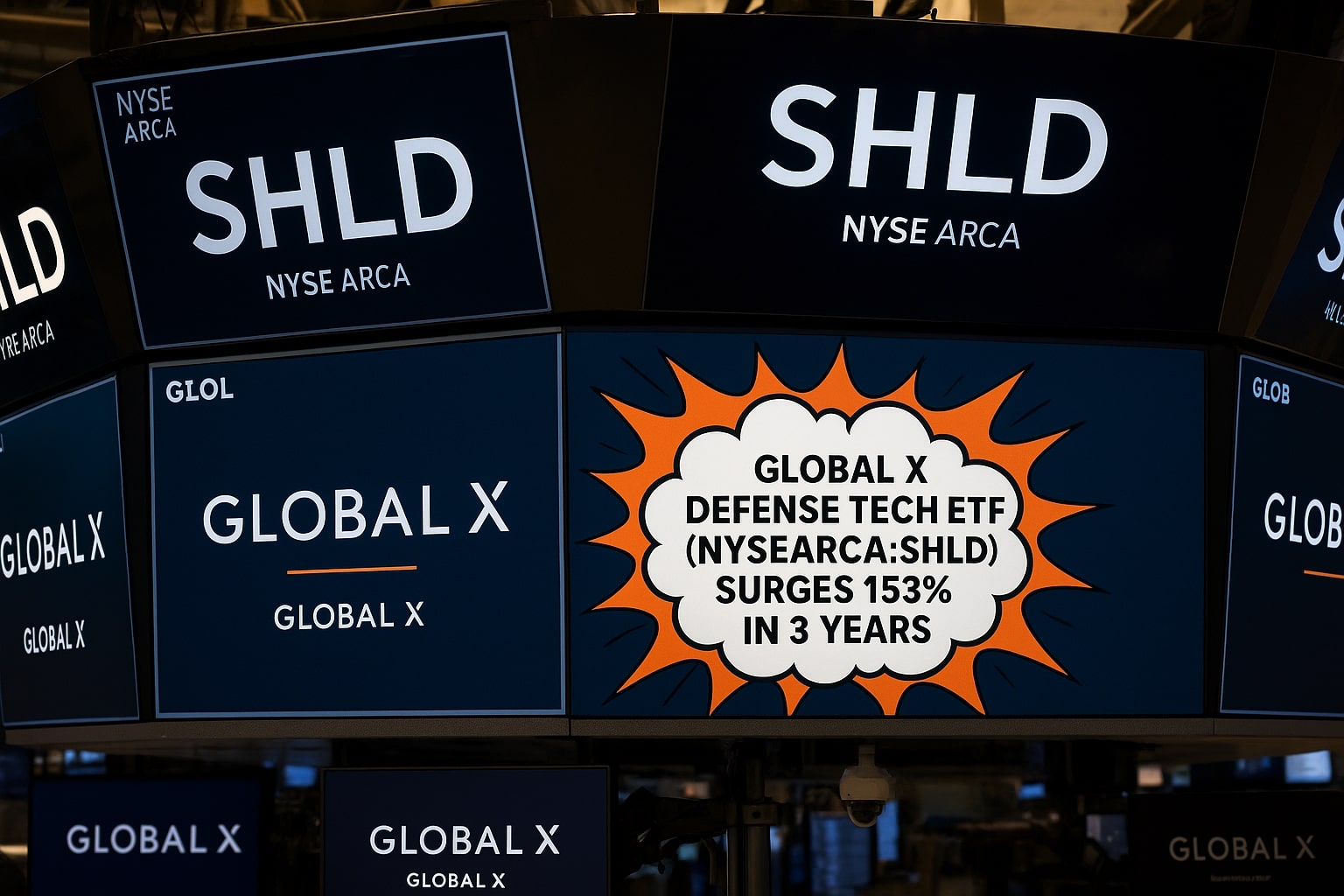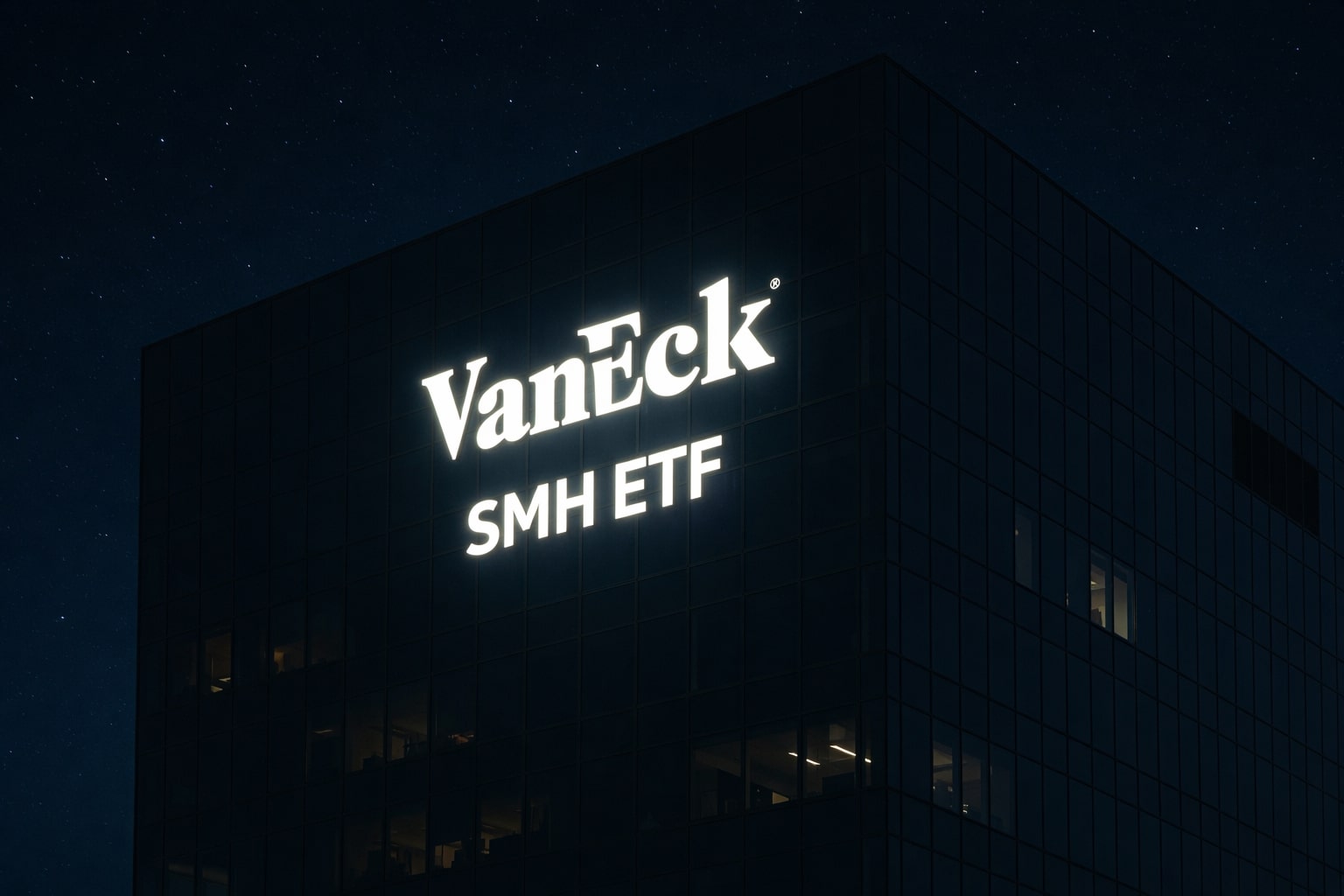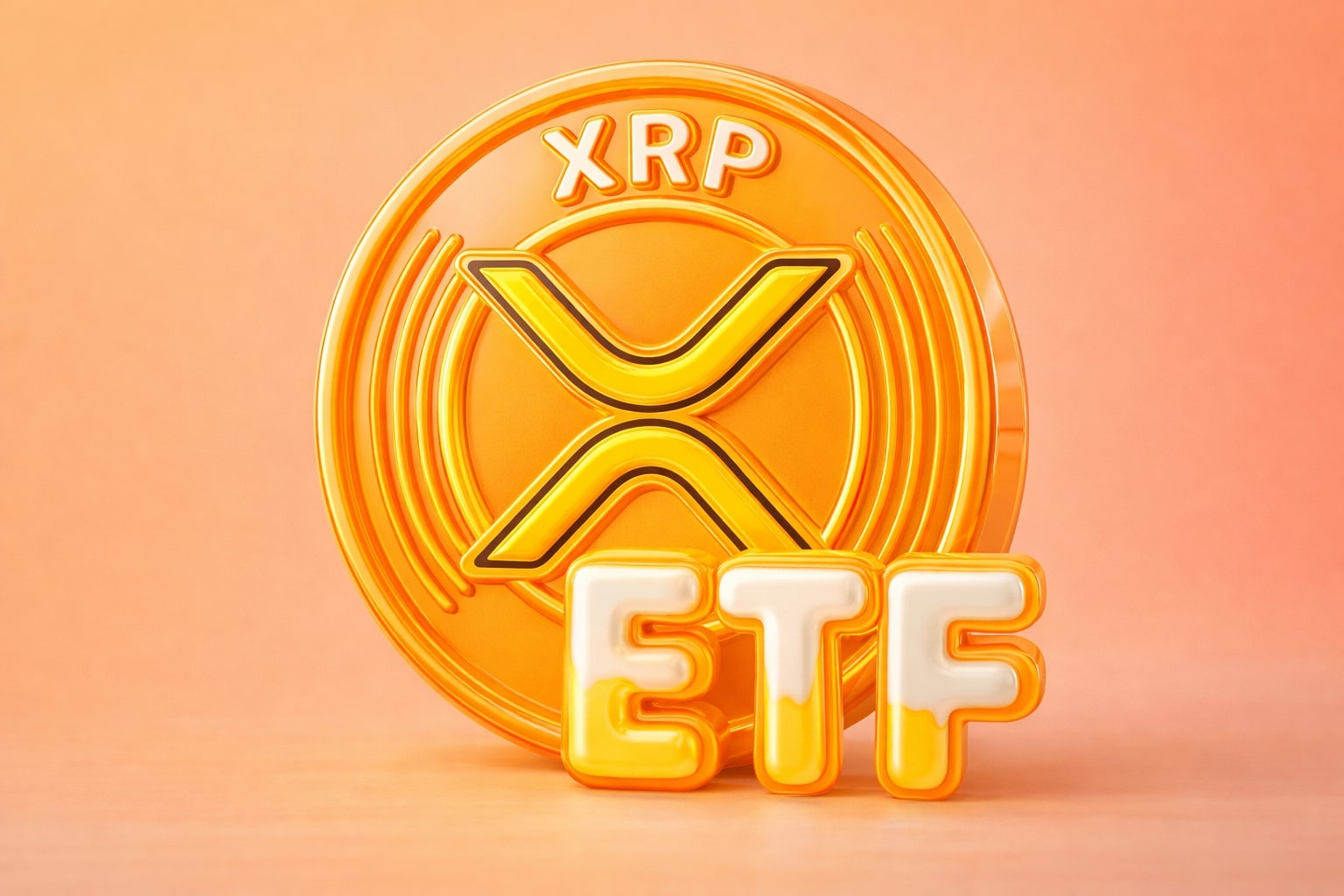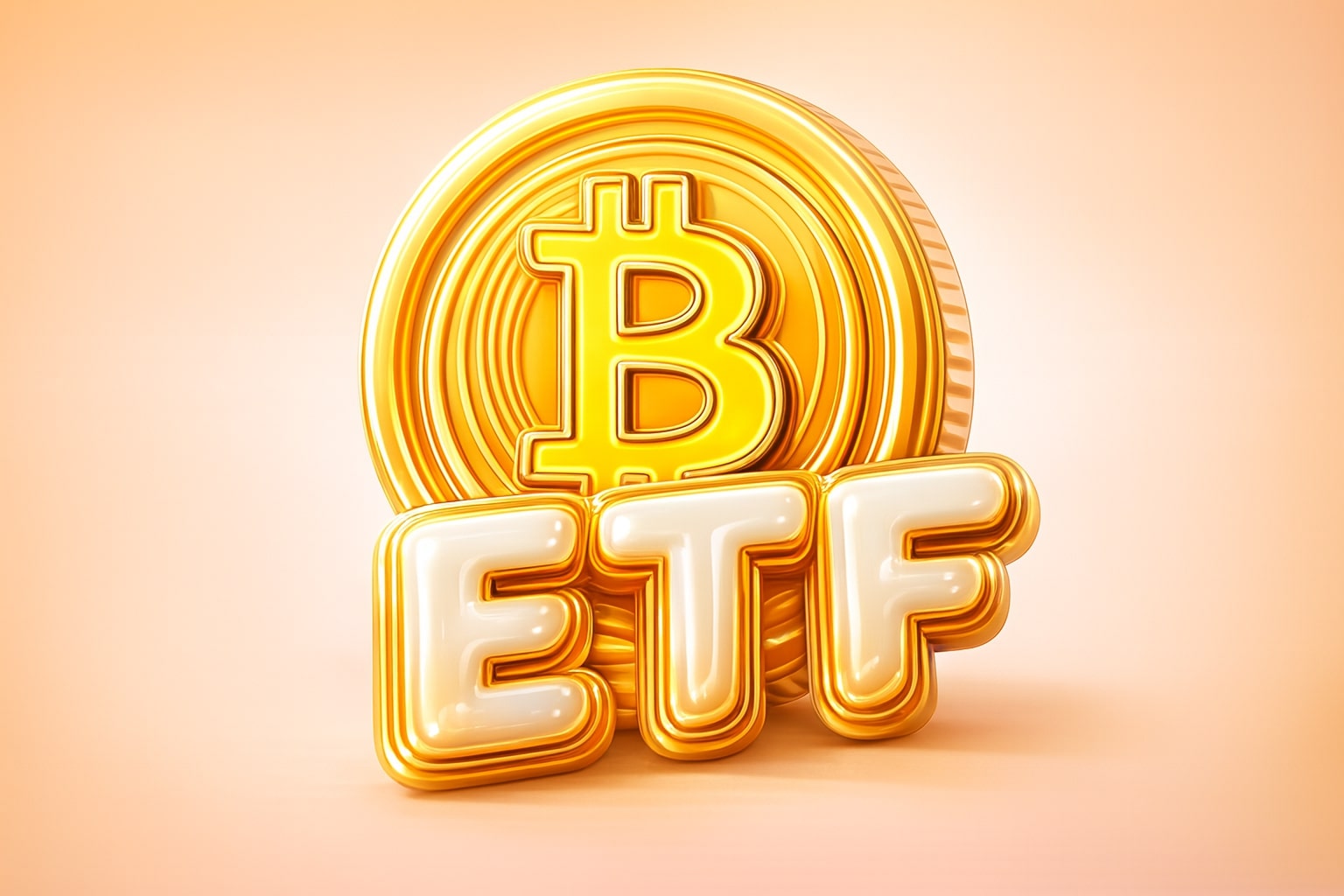
Global X Defense Tech ETF (NYSEARCA:SHLD) Climbs to $62.20 with 153% Three-Year Rally
SHLD outperforms ITA and PPA with $3.5B AUM, 72% annual gains, and concentrated exposure to Palantir, RTX, and Lockheed Martin | That's TradingNEWS
NYSEARCA:SHLD ETF Surges as Defense-Tech Momentum Outpaces Traditional Benchmarks
The Global X Defense Tech ETF NYSEARCA:SHLD has emerged as one of the most powerful thematic funds in U.S. markets since its launch in September 2023. At a trading price of $62.20 as of mid-August 2025, SHLD has not only outperformed traditional aerospace and defense ETFs but has also beaten the broader Nasdaq and QQQ benchmarks by more than 99% over the past three years. The ETF’s three-year total return of 153.5% and one-year gain of 72% showcase its relentless upward trajectory, driven by global defense spending and a tilt toward AI-powered and cybersecurity-heavy holdings.
AUM Growth and Liquidity Cement NYSEARCA:SHLD’s Market Position
Since inception, SHLD has accumulated $3.5 billion in assets under management (AUM), making it one of the fastest-growing thematic ETFs in the defense space. Its average daily turnover of $67.8 million underscores robust liquidity, with more than 1 million shares exchanging hands on typical sessions — levels that exceed the ETF median by more than 2,600% in volume terms. Such depth makes SHLD a highly tradable vehicle even for institutional desks seeking tactical exposure to defense and tech.
Concentration Risk and Portfolio Composition in SHLD ETF
SHLD holds just 45 companies, with the top 10 positions accounting for 62% of assets. Among the largest names are Palantir (PLTR), RTX Corporation (RTX), Lockheed Martin (LMT), Northrop Grumman (NOC), General Dynamics (GD), and L3Harris (LHX). This high concentration delivers strong upside when its core defense-tech names rally, but also leaves investors vulnerable to sharper drawdowns. Palantir alone is projected to grow revenue by 30.2% and EPS by 26.2% in the coming year, while RTX forecasts 5.9% revenue growth and 12.6% EPS expansion. LMT expects a 13.6% share price increase, supported by multi-year F-35 contracts and missile defense programs. The outlier remains Rheinmetall AG, which has guided for €80 billion in new orders by mid-2026, aligning with Europe’s higher defense allocations.
Defense Spending Tailwinds Driving SHLD’s Growth Path
Global defense spending hit $2.5 trillion in 2024, with the U.S. alone budgeting $886 billion, of which $143.8 billion was earmarked for AI, cybersecurity, and advanced systems — the exact categories where SHLD’s constituents dominate. NATO’s 2025 mandate for members to meet or exceed 2% of GDP in defense spending, with some leaders pushing for 3.5%, provides structural demand for SHLD holdings. Japan and European countries such as Germany and Poland are rapidly expanding budgets, directly benefiting companies like Rheinmetall, Leonardo, and RTX, all of which sit inside SHLD.
NYSEARCA:SHLD ETF’s Momentum Metrics Far Outpace Peers
The ETF’s 6-month gain of 53% and 12-month surge of 73% eclipse the ETF median of +4% and +11% respectively. Peers like ITA (+38.6% one-year) and PPA (+35%) lag considerably behind SHLD’s 71.6% expense-adjusted annual return. Even the broader Nasdaq-tracking QQQ — propelled by the “Magnificent 7” tech names — has been outpaced, as SHLD has leveraged both traditional contractors and next-gen AI defense innovators into one vehicle.
Volatility, Risks, and the Price of Concentration in SHLD ETF
Volatility, however, remains elevated. SHLD’s annualized volatility stands at 22.7%, around 31% above the ETF median. Its tracking error of 17% suggests sharp deviations from benchmark indices. With 62% of assets concentrated in 10 names, sharp drawdowns in Palantir or RTX could impact ETF performance disproportionately. Government spending remains the largest external risk. While budgets are expanding, defense outlays are politically cyclical, and fiscal tightening in Western economies could eventually slow contract growth.
Comparing SHLD with Sector Peers and the Case for Relative Outperformance
When measured against ITA, XAR, and PPA, SHLD consistently leads in returns, but comes with a higher 0.50% expense ratio, compared to ITA’s 0.38% or XAR’s 0.35%. However, SHLD’s performance premium — nearly double that of its peers on a three-year horizon — has justified the higher cost. Liquidity further reinforces its dominance, with $62.6M daily turnover, more than double that of ITA and multiples of PPA and XAR.
Geopolitical Catalysts and Corporate Wins Boosting NYSEARCA:SHLD
The ETF is positioned at the convergence of geopolitics and technology. Palantir has expanded its AI integration in U.S. and NATO defense procurement systems. L3Harris has secured multi-year satellite and communications contracts, while Rheinmetall has locked in record European orders. Lockheed Martin and Northrop Grumman are both scaling missile defense systems in response to heightened Eastern European tensions. These catalysts have created durable revenue streams across SHLD’s portfolio and justified its outsized earnings growth forecasts of 13.7% EPS expansion on average across the top nine holdings.
Decision: Buy, Hold, or Sell NYSEARCA:SHLD ETF?
At $62.20 per share, SHLD is no longer undiscovered — its 153% three-year rally has priced in much of the optimism. Yet the fundamentals show defense budgets expanding, AI and cybersecurity spend accelerating, and corporate order books filling into 2026. Compared with its peers, SHLD trades at a premium but offers unmatched exposure to the nexus of defense and advanced technology. Its liquidity, AUM growth, and structural positioning make it more than a speculative play — it is a strategic ETF for investors seeking exposure to one of the most durable megatrends of the decade.
For these reasons, despite volatility and concentration risks, I view NYSEARCA:SHLD as a Buy at current levels, with the potential to extend its lead over peers as geopolitical spending and AI adoption intensify.
That's TradingNEWS
Read More
-
SMH ETF: NASDAQ:SMH Hovering at $350 With AI, NVDA and CHIPS Act Fueling the Next Move
16.12.2025 · TradingNEWS ArchiveStocks
-
XRP ETFs XRPI and XRPR: Can $1B Inflows Lift XRP-USD From $1.93 Back Toward $3.66?
16.12.2025 · TradingNEWS ArchiveCrypto
-
Natural Gas Price Forecast: NG=F Falls to $3.80–$3.94 as Warm Winter Kills $5.50 Spike
16.12.2025 · TradingNEWS ArchiveCommodities
-
USD/JPY Price Forecast - USDJPY=X Slides, BoJ 0.50% Hike, Fed Cut and NFP Set the Next Big Move
16.12.2025 · TradingNEWS ArchiveForex


















